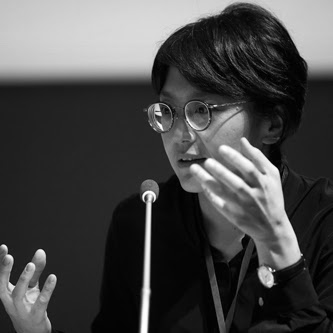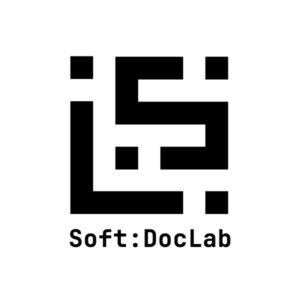從視覺裝置
看鄧南光影像專業到業餘之轉向
Viewing the Turn from Profession to Amateurism of Deng Nan-guang’s Photography with Visual Installation
2021.12
史惟筑 SHIH Wei-Chu
英文翻譯—劉培安 Liu, Pei-An

史惟筑
國立中央大學法國語言學系助理教授
Assistant Professor, Department of French Language and Literature, National Central University
The Taiwan Film and Audiovisual Institute has a collection of family photographs, which was shot with an 8mm camera by Deng Nan-guang between 1935 and 1941, and restored 57 minutes of photographs in 2013.
Apart from the images of the times, what other clues are there for us to consider the “viewing” actions of Deng? As one of the most important photographers in Taiwan, most of the existing papers and books put him in the framework of “authorship” and offer academic insights on the artistry and history of his photographs; nevertheless, few studies have discussed Deng’s family photographs. Moreover, it seems that the motive and purpose of the film are not suitable for understanding the characteristics of his motion pictures from the perspective of his photography style. The content of the photography may be a little distant from the topic of the film in terms of the colonial cultural experience of Taiwanese people. Therefore, this paper aims to explore Deng’s visual culture experience by focusing on the cameras he used and the viewing machines that appear in his films, as well as to explore the trajectory of amateur film activities in the context of the development of the film industry.
國家電影與視聽文化中心典藏鄧南光在1935-1941年間使用八毫米攝影機拍攝的家庭影像,並於2013年修復57分鐘的影像。而這些影像除了時代風光外,還有哪些線索可以提供我們思考鄧南光的「觀看」行動?
鄧南光身為台灣重要攝影師之一,現存的論文及著作多將他放在「作者」的框架下,針對其影像藝術性、歷史性提出學術見解,不過卻甚少有研究討論鄧南光的家庭影像。再者,無論從拍攝動機與目的來看,似乎也不太適合從影像風格去理解其動態影像的特色,而從影像內容透視彼時台人殖民文化經驗或許又會與電影命題產生些許距離。因此本文主要希望針對鄧南光使用的攝影機與影片中出現的觀看機器,初探鄧南光的視覺文化經驗,並聚焦在電影產業發展脈絡下的業餘電影,挖掘一條業餘影像的活動軌跡。
In 2021, the Taiwan Film and Audiovisual Institute selected to screen the collection of Deng’s “The Ordinary Scenes” at the “Ranging Memories Film Festival- Tribute to Taiwan Cultural Association.” The film contains unpublished photographs of Deng’s family, and the scene of Deng holding a camera in front of the camera, which became one of the main promotional scenes of the festival. According to current speculation, if Deng’s family photographs were taken between 1935 and 1941, then the 8mm camera in his hand was most likely the popular Ciné-Kodak Eight.
國家電影與視聽文化中心於2021年推出的《致憤青 – 文協百年紀念影展》中選映《鄧南光之風景寫真》一片,影片包含了從未公開過的鄧南光家庭影像。其中鄧南光手持一台攝影機對著鏡頭拍攝的畫面,更成為該影展的主要宣傳畫面之一。根據目前的推測,如果鄧南光的家庭影像是在1935-1941年間拍攝,那麼他手上那台8毫米攝影機極有可能是當年廣受歡迎的Ciné-Kodak Eight。
In addition to these films, we discover that he also likes to document the way people see. With what equipment do you use to see? In one of the scenes from “Architectural Descriptions,” Deng shoots a high angle shot with a man at a construction site looking through a monocular while directing the engineering work.
而在這些影像中,我們發現除了生活風景外,鄧南光也喜愛紀錄人們如何觀看?使用哪些器材來看?在《建築描寫》的段落中,鄧南光以俯角拍攝一位在工地裡透過單筒望遠鏡一面觀看、一面指揮工程的男人。
這個被笛卡爾在《屈光學》(La Dioptrique)一文中被認為是用來「發現」的視覺工具,其實也是鄧南光感興趣的發現:他不在意影中人觀看的對象,卻更在意他觀看時所使用的器材。就像他在《賽馬》中,刻意請友人拿雙筒望遠鏡看向遠方,鄧南光意圖紀錄的是這些可用來改變肉眼視像的視覺設備。也因此,在他的家庭影像中,除了人們身上常會拿望遠鏡、相機、八毫米攝影機外,鄧南光自己更同時使用立體相機與八毫米攝影機記錄相同影像。在《東京》段落裡出現的玩具攤、淺草電影院、東京劇場,或《台北樟腦祭》中「子供ノ国」(兒童王國)的遊樂設施旋轉飛機,還有《建築描寫》裡的建築結構等畫面,都是鄧南光同時以立體相機紀錄下來的場景。
Besides, Deng also likes to document people who are shooting, such as people sitting on the plane with an 8mm camera in “Children’s Kingdom(子供ノ国),” or friends who are shooting with cameras in “Yuigahama Seaside in Japan” and “Atami Kinugawa,” even showing the camera tag to the shot. Deng also invites his friends to shoot the scene in which he carries his camera and performs the shooting action. (“Yuigahama Seaside in Japan” and “Atami Kinugawa”) These documentary visual representations of mechanical scenes validate Benoît Turquety’s study of amateur cinema that he emphasizes Michel De Certeau’s regarding the instruction as “Style.” Turquety “conceives of amateurs as users not in terms of subordinating them to a mechanical history, but imagining them in the frame of a posture aesthetic, a re-appropriation and a political strategy that can constantly bring about games in their deployment and construct on the limits of anti-discipline networks.”[1]
此外,鄧南光也喜歡紀錄正在拍攝的人,像是「子供ノ国」裡坐在飛機上拿著八毫米攝影機的人,或在日本由比海濱、熱海鬼怒川拿著相機拍攝的朋友們,友人甚至還向鏡頭展示相機吊牌,鄧南光也邀請朋友拍攝自己拿著攝影機與相機的畫面,「表演」拍攝動作(《熱海鬼怒川》、《日本遊比海濱》)。這些紀錄視覺再現機械的畫面,驗證了貝諾.圖格提(Benoît Turquety)為何在研究業餘電影時,強調德塞圖(Michel De Certeau)將使用方法視為「風格」(Style)的論點。圖格提「將業餘人士當作使用者不是要讓他們服從於機械史之中,而是要在姿態美學、再挪用與政治策略的框架下去想像他們,而這種政治策略能在部署中不斷地帶來一些遊戲,並建構在反紀律(anti-discipline)網絡的限制上。」[1]
With this argument, when we return to Deng’s family photographs, we can see not only the bourgeois presentation of modern life during the Japanese colonial period, but Deng’s own viewing hobby. In addition to the scenes showing the captured photography equipment, we also see traces of his deliberate editing of the film in “Yuigahama Seaside in Japan.” First, Deng shot one of his friends coming forward with a camera, stopping in front of the shot and taking a picture. And the next scene shows a woman in a kimono holding a mirror, who suddenly notices the camera and smiles at it, telling it to stop shooting. Back to the man in the first scene, he continues taking pictures, and then slowly puts down the camera and smiles. In these three scenes, instead of a mere chronicle of life, a moment of “filmmaking” emerges. Using his home editing equipment[2], Deng imitates the shot reverse shot commonly used in films to establish relationships between characters, interspersing the life images with the “style” he intends to show in seeing.
基於此論點,再回到鄧南光的家庭影像時,我們更可在日治時期資產階級展現摩登生活的樣貌外,看見鄧南光如何展示自身觀看的嗜好。除了展示擷取影像器材的片段外,我們更在《日本由比海濱》的片段中,看到鄧南光刻意剪接影片的痕跡。鄧南光先是拍攝一位拿著相機的友人從遠處走來,並在攝影機前停下拿起相機拍照,下一個畫面則出現一身著和服女子攬鏡自照,而突然發現鏡頭的她,笑著對鏡頭示意不要繼續拍攝。接下來又回到前一個鏡頭的男子,男子仍持續拍攝,然後慢慢放下相機、微笑。在這三個畫面組成的片段裡,已經不是單純的生活記事,反而浮現出「拍電影」的片刻[2],鄧南光利用家用剪接設備模仿電影經常用來建立人物關係的正反拍鏡頭,在生活影像中穿插他意圖展現的觀看「風格」。
In fact, this illustrates the industry’s motivation for the emergence of small gauge cinema, which camera manufacturers wanted to cultivate an ordinary people’s interest in film and advertised that even amateur cameras could make professional films. Whether it was the 9.5mm Pathé Baby[3], which appeared in 1923, or the 16mm Ciné-Kodak Model A, the idea was to make movies more accessible at home. Kenneth Mees, a director of the Eastman Research Laboratory, emphasized that the 16mm system they developed was an “amateur size” regular camera.[4] Meanwhile, Kodak’s ambition was to promote two scenario of “filming”: filmmaking as family leisure and filmmaking as serious leisure.[5] Eastman Research Laboratory also invited Norris Gleason, a housewife with two children, to use Cine-Kodak Model A to shoot a test film, “The Picnic Party.” These examples above revealed a commercial attempt, which took family leisure as their priority concern, promoting popularization of filmmaking.
實際上,這正說明了小規格(small gauge)電影出現的產業動機,攝影器材製造商希望培養一般人的電影嗜好,於是以業餘攝影機也能拍出專業電影為宣傳,無論是1923年出現的9.5毫米「百代寶貝」(Pathé Baby)[3] 或是16毫米攝影機Ciné-Kodak Model A,都是為了讓電影能夠更輕易進入居家場域。當時伊斯曼研究實驗室主任基內斯.密斯(Kenneth Mees)強調他們研發出的16毫米系統是「業餘尺寸」(amateur size)的正規攝影機[4],同時柯達的野心是為了推動兩種「拍電影」的情境:拍片是家庭休閒(Filmmaking as family leisure)與拍片是認真的休閒(Filmmaking as serious leisure)。[5] 伊斯曼公司更邀請有兩個孩子的家庭主婦諾莉斯.葛里森(Norris Gleason)使用Cine-Kodak Model A來拍攝一支測試影片:《野餐聚會》(The Picnic Party),上述各例便是以家庭休閒為優先的商業企圖下,推動電影拍攝普及化。
It was not until the advent of 8mm film in 1932 that amateur cinema became widespread due to its significantly lower prices and lighter equipment. The trend of small gauge cinema as a leisure and hobby blew all the way from the 1920s to the 1930s, and from the West to East Asia in Taiwan. Despite colonial domination, this genre of cinema did not develop into a stable professional industry in Taiwan. However, using amateur film perspective to review the content and activities of photography in this period may redefine the boundaries of film epistemology. As Turquety claimed; to take the epistemological perspective of cinema out of the traditional vision and framework of film theory and find a new paradigm for understanding what cinema was, including how people perceive cinema. Thus, we can create a research path from amateur cinema: “Not only focusing on amateurs as users, but also seeking new connections with local technical systems, cultures, media, arts, and traditions through a decentralizing process of the amateur against the professional.” [6]
儘管要等到1932年8毫米膠卷的出現,因為其價格大幅降低、器材更為輕便才得以讓業餘電影大為普及,但小規格電影這股以拍電影為休閒、嗜好的風潮一路從20年代吹到30年代,也一路從西方吹向東亞的台灣。儘管在殖民體制下,此種類型的電影未能在台灣發展出穩定的專業產業規模,但如果從業餘電影面相來重新看待此時期的影像內容與活動,或許可重新定義電影認識論的界線。如同圖格提所言,要讓電影認識論的視角脫離傳統電影理論的視野與框架,去尋找新的範式來理解電影曾是什麼,其中亦包含人們如何去感知電影。由此我們便能從業餘電影開創一條研究取徑:「除了聚焦在業餘者等同使用者之外,更是以業餘對立專業的去中心過程,尋找與在地技術體系、文化、媒體、藝術、傳統的新聯繫」。[6]
1. Benoît Turquety, “Understanding (Amateur) Cinema – Epistemology and technology”, in Global Perspectives on Amateur Film Histories and Cultures, Indiana: Indiana University Press, 2021, p. 36.
2 根據鄧南光長子鄧世光的說法,他記得父親會在剪接台上剪、黏沖洗好的8毫米底片。訪談時間2021年12月1日,於鄧世光家中。
3 百代(Pathé)先於1922年推出9.5毫米的Pathé-Baby放映機,再於隔年推出攝影機。
4 Susan Aasman, « The Introduction of Ciné-Kodak: “The Long-Awaited Answer” », Exposing The Film Apparatus, eds. by Giovanna Fossati and Annie Van Den Oever, Amsterdam: Eye Filmmuseum, 2016, p. 125.
5 Ibid., p 126.
6 Benoît Turquety, Ibid., p. 41.
